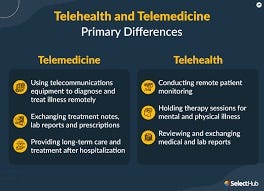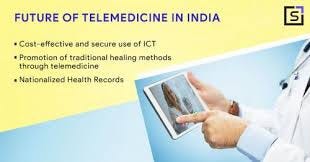- “Empowering Emergency Medicine Physicians”
- “Queue Management Software and Hospitalists in Modern Healthcare”
- “Enhancing-Pediatric-Infectious-Disease-Care”
- “Revolutionizing-Geriatric-Care”
- “Optimizing-Patient-Care-in-Pediatric-Rheumatology”
- “Pediatric-Pulmonology-Care”
- “Revolutionizing-Pediatric-Gastroenterology”
- “Enhancing-Pediatric-Neurology-Care”
- “Optimizing-Pediatric-Cardiology”
- “Enhancing-Pediatric-Endocrinology-Care”
- “Empowering-Neonatologists-with-EMR-Software”
- “Pediatrics-in-Focus”
- “Empowering-Neurologists-with-Electronic-Prescriptions”
- “Streamlining-Dermatology-Practice”
- “Streamlining-Psychiatry-Practice”
- “A-Game-Changer-for-Infectious-Disease-Specialists”
- “Allergist/Immunologist-Practices-with-QME-EMR-and-Hospital-Management-Systems”
- “Empowering-Hematologists-and-Revolutionizing-Healthcare-Management”
- “Optimizing-Healthcare-with-HMIS”
- “Transforming-Healthcare-with-Endocrinologist”
- “Healthcare-Management-with-QMe-EMR-for-Nephrologists”
- “Revolutionizing-Healthcare-Management-with-Cardiologist”
- “Streamlining-Operations-with-Queue-Management-Software”
- “Optimizing-Healthcare-Delivery”
- “Transforming-Healthcare-Management”
- HMIS And Decision Support Systems
- Dengue Unveiled: An Overview of Causes, Symptoms, and Prevention.
- Dengue Fever: Unraveling the Mosquito-Borne Menace.
- HMIS-and-Continuity-of-Care
- Project-Management-for-Successful-HMIS
- Catalysts of Wellness: The Transformative Power of Diagnosis and Screening in Healthcare
- Patient-Data-Management
- Guardians of Healthcare: The Vital Role of Fraud Detection in Ensuring Ethical Care
- Unlocking Insights
- Healthcare in the Digital Age: The History Of Development Of HMIS
- Transforming Healthcare
- Safeguarding-HMIS-Data
- HMIS-Integration-Challenges
- ANXIETY UNVEILED: CONQUERING FEARS AND CULTIVATING CALM.
- BEYOND THE BLUE: EMBRACING LIGHT ON THE PATH OF DEPRESSION.
- BEYOND THE BLUE: EMBRACING LIGHT ON THE PATH OF DEPRESSION.
- HMIS and Resource Allocation
- HMIS Data Accuracy and Integrity
- SOOTHING THE SILENT PAIN: UNDERSTANDING VULVODYNIA.
- Impact of HMIS on OPD Operations
- In Patient Management Through Health Management
- WITHIN THE SHADOWS: UNDERSTANDING BRAIN TUMOURS FROM WITHIN
- HMIS-and-Health-Insurance-Integration
- HMIS-Data-Analytics-for-Preventive-Care
- SILENT INTRUDERS: UNRAVELLING THE MYSTERIES OF PELVIC INFLAMMATORY DISEASE
- BREAKING FREE: OVERCOMING THE HURDLE OF URINARY INCONTINENCE
- “HMIS and Doctor-Patient Communication”
- HEALING INSIGHTS: THE POWER OF THE HOSPITAL MANAGEMENT INFORMATION SYSTEM.
- SOLVING THE OVARIAN PUZZLE:UNDERSTANDING OVARIAN CYST INSIDE OUT
- Usability And User Experience In HMIS
- WARRIOR’S BATTLE: TRIUMPHING OVER UTERINE CANCER
- POLYCYSTIC OVARY PUZZLE: UNRAVELLING THE ENIGMA OF PCOS
- Unlocking-the-Potential-of-HMIS-Data-for Medical-Research-and-Healthcare-Policy-Enhancement
- Feminine Health Unplugged: Empowering Women in Vaginal Infection Awareness
- Revitalizing Feminine Comfort: A Journey Through Vaginal Wellness.
- HMIS Vendor Selection Guide
- UNDERSTANDING FIBROIDS: NAVIGATING THE INTRICACIES OF UTERINE HEALTH.
- Best Practices for Data Migration in Healthcare Management Information Systems (HMIS)
- CONCEIVING HOPE: NAVIGATING THE JOURNEY OF INFERTILITY
- MENSTRUAL IRREGULARITIES: CAUSES AND TREATMENT
- RISING ABOVE: EMPOWERING WOMEN WITH PELVIC ORGAN PROLAPSE
- Leveraging HMIS for Enhanced Public Health Management and Disease Surveillance
- Challenges and Benefits of Implementing HMIS in Rural and Remote Healthcare Settings
- Securing Healthcare Continuity
- Pancreatic Cancer
- Lymphoma
- Leukemia
- Bladder Cancer
- Skin Cancer (Melanoma)
- COLORECTAL CANCER
- All about Prostate Cancer
- Fighting out the Disease of Lung Cancer
- Advances in Breast Cancer Treatment: A Comprehensive Guide
- Autism Spectrum Disorder (ASD)
- EHR SYMPHONY: HARMONIZING HEALTHCARE THROUGH ELECTRONIC RECORDS .
- Understanding Testicular Cancer: Detection, Treatment And Awareness.
- Childhood Obesity
- Kawasaki Disease
- Eczema (Atopic Dermatitis)
- Understanding Bone Cancer: A Brief Overview.
- Attention-Deficit/Hyperactivity Disorder (ADHD)
- PELVIC PAIN:CAUSES SYMPTOMS AND PREVENTIONS
- Type 1 Diabetes: Causes, Symptoms, and Treatment
- Gastroesophageal Reflux Disease (GERD)
- Battling Pneumonia: Unveiling the Stealthy Invader of the Lungs
- Unravelling the Complexity of Allergic Reactions: Understanding, Managing, and Thriving
- Rashes (Eczema, Dermatitis)
- UNDERSTANDING CERVICAL DYSPLASIA: CAUSES, SYMPTOMS AND MANAGEMENT
- Chicken Pox
- Endometriosis Unmasked: A Closer Look at the Silent Struggle
- Croup
- Hand, Foot and Mouth Disease (HFMD)
- THE DAWNING OF A NEW ERA: EMBRACING THE JOURNEY OF MENOPAUSE
- Urinary Tract Infections (UTIs)
- Strep Throat (Streptococcal Pharyngitis)
- Understanding Otitis Media(Ear Infection)
- 28th July In medical history!!
- Influenza (Flu) - Symptoms, Prevention and Management
- 27th July In medical history!!
- Respiratory Syncytial Virus (RSV) Infection
- SIGNIFICANCE AND ADVANTAGES OF HMIS: A DETAILED ANALYSIS
- Beyond Boundaries: Transforming Healthcare with Virtual Reality
- TRACK YOUR LIFE : A DETAILED UNDERSTANDING ON HEALTH MONITORING SYSTEM
- EXPLORING BENEATH THE SURFACE: UNDERSTANDING BARTHOLIN CYSTS AND ABSCESSES
- GUARDING GUT HEALTH: YOUR GUIDE TO POTENTIAL CROHN’S DISEASE PREVENTION.
- PATHWAYS OF HOPE: NAVIGATING THE CHALLENGES OF ESOPHAGEAL CANCER
- Gastric Battles: Confronting Stomach Cancer Head-On.
- HMIS IN SMALL CLINICS: A STEP TO A BETTER FUTURE
- Harmonizing Your Cycle: A Journey to Menstrual Health and Balance.
- Respiratory Syncytial Virus (RSV) Infection
- GUARDING OUR INTIMATE WORLD: A CLOSER LOOK AT STI
- Real-World HMIS Implementation Case Studies: Using Data to Transform Healthcare
- Gastroenteritis (Stomach Flu)
- Asthama - The Anatomy Of Breathing
- Influenza - A Silent Intruder
- Breast Cancer
Virtual Healing: Navigating Healthcare Through Telemedicine and Telehealth.
“Virtual Healing: Navigating Healthcare Through Telemedicine and Telehealth”
Introduction

Telemedicine and telehealth refer to the use of technology to provide medical services, consultations, and health-related information remotely. These practices have gained significant prominence, especially in recent times, due to their potential to improve access to healthcare, enhance patient convenience, and address various healthcare challenges.
Here’s a bit more about each concept:
Telemedicine:
Telemedicine involves the remote diagnosis and treatment of patients through telecommunications technology, such as video calls, phone calls, and online messaging. It allows healthcare professionals to provide medical consultations, make diagnoses, recommend treatments, and even prescribe medications without the need for an in-person visit. Telemedicine is particularly useful for non-emergency situations, follow-up appointments, and routine healthcare needs.
Telehealth:
Telehealth is a broader term that encompasses a wider range of remote healthcare services beyond clinical care. It includes not only medical consultations but also health-related education, preventive services, and administrative functions. Telehealth can cover areas such as health education, mental health support, monitoring chronic conditions, and even administrative tasks like scheduling appointments and managing medical records.
Telemedicine and telehealth are continually evolving, with ongoing developments in technology, regulations, and best practices. They have the potential to play a transformative role in healthcare delivery by making services more accessible, convenient, and efficient for patients and healthcare providers alike. This article also sheds light on how an emerging healthcare software, known as QMe , is changing the course of direction in the field of Telemedicine and Telehealth.
Telemedicine: A Detailed Analysis.

Telemedicine involves using technology to provide healthcare services remotely. It encompasses various forms of communication, including video calls, phone calls, secure messaging, and data sharing between healthcare professionals and patients. The goal is to deliver medical care, consultations, diagnoses, treatment recommendations, and health-related information without requiring in-person visits.
Modes of Telemedicine:
- Synchronous Telemedicine:
This involves real-time communication between the healthcare provider and the patient. Video calls and phone calls fall under this category, allowing for immediate interaction and diagnosis.
- Asynchronous Telemedicine:
Also known as “store-and-forward,” this mode involves sharing patient information (e.g., medical records, images, test results) with a healthcare provider for review at a later time. This approach is useful for non-urgent cases and specialist consultations.
Advantages:
-
Accessibility: Telemedicine bridges the gap between patients and healthcare providers, especially for those in rural or remote areas.
-
Convenience: Patients can seek medical advice from the comfort of their homes, reducing travel time and wait times.
-
Time and Cost Savings: Telemedicine eliminates the need for travel and related expenses, making healthcare more affordable and efficient.
-
Chronic Disease Management: Patients with chronic conditions can receive regular check-ups and monitoring without frequent visits.
-
Continuity of Care: Follow-up appointments and consultations are more manageable, leading to improved patient engagement.
-
Emergency Triage: Telemedicine can assist in quickly assessing urgent cases and providing guidance on whether in-person care is necessary.
Use Cases:
-
Primary Care: Telemedicine is used for diagnosing and treating common illnesses, prescribing medications, and providing preventive care.
-
Specialist Consultations: Patients can consult specialists remotely for specific health concerns, reducing the need for referrals and long waits.
-
Mental Health Services: Telemedicine provides a confidential platform for therapy, counseling, and mental health support.
-
Chronic Disease Management: Patients with conditions like diabetes, hypertension, and asthma can have their health monitored and receive guidance remotely.
-
Dermatology: Dermatologists can diagnose and treat skin conditions through images shared by patients.
-
Remote Monitoring: Wearable devices and sensors can trans
-
mit health data to healthcare providers for real-time monitoring.
-
Post-Surgery Follow-up: Patients can receive post-operative care instructions and guidance remotely.
Challenges and Considerations:
-
Technology Barriers: Not all patients have access to the required technology or reliable internet connections.
-
Diagnostic Limitations: Some medical issues require physical examinations, which can’t be performed remotely.
-
Privacy and Security: Protecting patient information and complying with regulations is crucial.
-
Reimbursement and Regulation: Regulations and reimbursement policies for telemedicine vary by region and may impact adoption.
-
Patient-Provider Relationship: Establishing rapport remotely requires effective communication skills.
Telemedicine continues to evolve with advancements in technology, including AI-driven diagnostics, virtual reality applications, and more integrated electronic health records. As regulations adapt to the digital healthcare landscape, telemedicine is likely to play an increasingly prominent role in the healthcare industry, providing accessible, convenient, and effective medical care to patients around the world.
Introduction to Telehealth:
Telehealth is a revolutionary approach to healthcare that employs telecommunications technology to deliver medical services, consultations, and health-related information remotely. It encompasses a wide range of services, including virtual doctor visits, remote monitoring, teleconsultations, and more. The concept of telehealth has gained significant momentum due to advancements in digital communication, increased internet access, and the need for innovative healthcare solutions.
Modes of Telehealth Services:
- Synchronous Telehealth:
This involves real-time communication between patients and healthcare providers through video calls, phone calls, or secure messaging platforms. It allows for immediate interaction, diagnosis, and treatment recommendations.
- Asynchronous Telehealth:
In this mode, patients share their medical information, such as images, test results, and medical history, with healthcare providers via secure online platforms. Providers review the information at a later time and provide recommendations or prescriptions.
Key Advantages of Telehealth:
-
Enhanced Access: Telehealth bridges geographical gaps, making healthcare services accessible to individuals in rural or remote areas, as well as those with mobility constraints.
-
Convenience:Patients can receive medical care from the comfort of their homes, eliminating the need for travel and reducing wait times.
-
Time and Cost Savings: Telehealth reduces travel-related expenses and time off work for both patients and caregivers.
-
Chronic Disease Management: Remote monitoring and virtual consultations facilitate ongoing management of chronic conditions.
-
Mental Health Support: Telehealth offers a confidential platform for mental health services, enabling therapy and counseling remotely.
-
Emergency Triage: Providers can evaluate urgent cases and determine whether in-person care is necessary, helping patients make informed decisions.
Applications and Use Cases:
- Primary Care: Telehealth supports initial diagnoses, treatment recommendations, and prescription services for common ailments.
- Specialist Consultations: Patients can consult with medical specialists regardless of their physical location, improving access to expertise.
- Chronic Disease Monitoring: Remote devices collect and transmit vital signs, helping healthcare providers monitor patients’ health remotely.
- Mental Health Services: Telehealth platforms offer counseling, therapy, and support for mental health conditions.
- Post-Surgery Follow-up: Patients can receive instructions, wound assessments, and post-operative care remotely.
- Preventive Care: Telehealth provides health education, counseling, and guidance on lifestyle changes to prevent illnesses.
Challenges and Considerations:
- Technology Access: Not all patients have access to the required technology or stable internet connections.
- Diagnostic Limitations: Certain medical issues require physical examinations, which telehealth cannot provide.
- Regulatory Complexities: Telehealth practices vary by region and may be subject to specific regulations and reimbursement policies.
- Privacy and Security: Ensuring the confidentiality and security of patient data during virtual consultations is essential.
Future Trends and Opportunities:
- Technological Integration: Integration with wearable devices, artificial intelligence, and virtual reality will enhance telehealth capabilities.
- Expanded Services: Telehealth may encompass a broader range of services, such as prescription delivery, remote diagnostics, and home health monitoring.
- Personalized Care: AI-driven algorithms will help tailor treatment plans based on patient data and medical history.
In conclusion, telehealth is a transformative force that is redefining healthcare delivery by making it more accessible, convenient, and efficient. While challenges remain, its potential to revolutionize healthcare and improve patient outcomes is undeniable. As technology continues to evolve, telehealth is poised to play a central role in shaping the future of healthcare services worldwide.
The Impact Of Telehealth and Telemedicine On World

Telehealth and telemedicine have become increasingly important and widely adopted in today’s world, driven by advancements in technology, changing patient preferences, and the need for accessible healthcare services. Here’s a look at how telehealth and telemedicine are playing a significant role in the current healthcare landscape:
- Increased Accessibility:
Telehealth and telemedicine have broken down geographical barriers, making healthcare services available to individuals in rural, remote, and underserved areas. Patients no longer need to travel long distances to access medical expertise, specialist consultations, or follow-up care.
- Convenience and Patient-Centered Care:
In a fast-paced world, patients value convenience. Telehealth allows them to consult with healthcare professionals from the comfort of their homes, reducing the need to take time off work or spend hours in waiting rooms. This patient-centered approach enhances patient satisfaction and engagement.
- Pandemic Response and Infection Control:
The COVID-19 pandemic accelerated the adoption of telehealth and telemedicine. These technologies helped healthcare systems manage patient care while minimizing the risk of exposure to the virus. Telemedicine proved crucial for diagnosing and treating non-COVID-19 cases remotely.
- Chronic Disease Management:
Telehealth plays a vital role in monitoring and managing chronic diseases. Patients with conditions like diabetes, hypertension, and heart disease can benefit from remote monitoring of vital signs, medication adherence, and lifestyle factors.
- Mental Health Services:
The convenience and privacy offered by telehealth have made it an invaluable tool for mental health support. Individuals seeking therapy, counseling, or mental health interventions can access services from the comfort of their homes, reducing stigma and barriers to care.
- Remote Monitoring and Wearable Devices:
The integration of wearable devices and remote monitoring tools allows patients to track their health metrics, such as heart rate, blood pressure, and physical activity, in real time. Healthcare providers can remotely monitor patient data and intervene when necessary.
- Specialist Consultations:
Telemedicine provides access to specialists regardless of geographical location. Patients can consult with experts in various medical fields without the need to travel, facilitating quicker diagnoses and treatment plans.
- Post-Discharge and Follow-Up Care:
Telehealth has proven valuable for post-operative and follow-up care. Patients can receive instructions, address concerns, and receive guidance on recovery without leaving their homes.
- Health Maintenance and Preventive Services:
Telehealth is not limited to treating illnesses; it also supports preventive care and health maintenance. Patients can receive guidance on nutrition, exercise, and lifestyle changes to improve their overall health.
- Integrated Healthcare Systems:
Telehealth is increasingly integrated into healthcare systems and electronic health records, streamlining communication between healthcare providers and ensuring continuity of care.
While telehealth and telemedicine offer numerous benefits, challenges such as technology accessibility, regulatory frameworks, and data security remain. However, their transformative potential in improving healthcare access, patient engagement, and overall health outcomes is clear. As technology continues to advance, these practices are poised to become integral components of modern healthcare delivery.
Telemedicine in India

India is a large nation with a population of more than 121 crores[11] of sundry people. Due to this fact, the equitable distribution of healthcare services has proven to be a major goal in public health management time and again. Adding to this is the recent trend of concentration of healthcare facilities to the cities and towns (including 75% of the population of doctors), away from rural India, where 68.84% of the national population live.
ISRO (Indian Space Research Organization) made a modest beginning in telemedicine in India with a Telemedicine Pilot Project in 2001, linking Chennai’s Apollo Hospital with the Apollo Rural Hospital at Aragonda village in the Chittoor district of Andhra Pradesh. Initiatives taken by ISRO, Department of Information Technology (DIT), Ministry of External Affairs, Ministry of Health and Family Welfare and the state governments played a vital role in the development of telemedicine services in India.
A few noteworthy examples of the successfully established telemedicine services in India include mammography services at Sri Ganga Ram Hospital, Delhi; oncology at Regional cancer center, Trivandrum; surgical services at Sanjay Gandhi Postgraduate Institute of Medical Sciences, School of Telemedicine and Biomedical Informatics, and many more. Telemedicine also finds its use in places where large populations occasionally/periodically gather at a point of time, where provision of medical care becomes the need of the hour; for example, the Government of Uttar Pradesh practices telemedicine during Maha Kumbhamelas.
One of the finest example of Telemedicine is QMe Healthcare system that can be defined as a cutting-edge hospital management software designed to revolutionize healthcare facilities worldwide. With its intelligent queue-based OPD management system, patients experience reduced waiting times and optimized appointment scheduling. The software’s comprehensive patient history and electronic health records ensure seamless access to critical medical information, enabling healthcare professionals to make informed decisions and provide personalized care. QMe’s automatic workflows streamline administrative tasks and treatment plans, enhancing overall efficiency and reducing human errors. The QMe software’s IPD management feature enables smooth inpatient care coordination, while its TPA support simplifies insurance processes.
Telemedicine is one field which was successful in invoking a keen interest in the private sector and making them take an active part in public health management. Some of the current major Indian private sector players in telemedicine include Narayana Hrudayalaya, Apollo Telemedicine Enterprises, Asia Heart Foundation, Escorts Heart Institute, Amrita Institute of Medical Sciences and Aravind Eye Care.
HASHPAY: QMe HEALTHCARE MANAGEMENT SYSTEM.
A Software developed to change lives for better future.

QMe is a cutting-edge hospital management software designed to revolutionise healthcare facilities worldwide. With its intelligent queue-based OPD management system, patients experience reduced waiting times and optimized appointment scheduling. The software’s comprehensive patient history and electronic health records ensure seamless access to critical medical information, enabling healthcare professionals to make informed decisions and provide personalized care. QMe’s automatic workflows streamline administrative tasks and treatment plans, enhancing overall efficiency and reducing human errors. The software’s IPD management feature enables smooth inpatient care coordination, while its TPA support simplifies insurance processes. Additionally, QMe offers packages support for various medical services and features automated billing to ensure transparent and hassle-free financial transactions. Embracing QMe empowers hospitals to enhance patient experiences, optimize healthcare workflows, and deliver top-notch medical services.
Conclusion
In today’s rapidly evolving world, telehealth and telemedicine have emerged as transformative forces in the healthcare landscape. These technological innovations have shattered geographical barriers, ushering in a new era of accessible and patient-centered care. Convenience, especially in a fast-paced society, is now coupled with the ability to receive medical expertise from the comfort of one’s home.
The global response to the COVID-19 pandemic demonstrated the invaluable role of telehealth in ensuring continuity of care while minimizing exposure risks. From chronic disease management to mental health support, telehealth addresses a diverse array of healthcare needs, making specialized services available to all, regardless of location.
By incorporating wearable devices and remote monitoring tools, telehealth empowers patients to actively participate in their well-being. Specialist consultations, post-operative care, and preventive services have become more attainable than ever before. Moreover, the integration of telehealth into healthcare systems not only improves communication between providers but also contributes to the seamless management of patient records.
However, challenges such as ensuring equitable technology access, navigating regulatory frameworks, and safeguarding patient data privacy must be addressed for the continued success of telehealth. As technological advancements persist, the potential for telehealth and telemedicine to redefine healthcare’s accessibility, convenience, and effectiveness remains boundless.
In the convergence of technology and healthcare, these practices stand as beacons of progress, promising a future where quality medical care is not constrained by distance, enabling individuals to prioritize their health with ease and confidence.
- “Empowering Emergency Medicine Physicians”
- “Queue Management Software and Hospitalists in Modern Healthcare”
- “Enhancing-Pediatric-Infectious-Disease-Care”
- “Revolutionizing-Geriatric-Care”
- “Optimizing-Patient-Care-in-Pediatric-Rheumatology”
- “Pediatric-Pulmonology-Care”
- “Revolutionizing-Pediatric-Gastroenterology”
- “Enhancing-Pediatric-Neurology-Care”
- “Optimizing-Pediatric-Cardiology”
- “Enhancing-Pediatric-Endocrinology-Care”
- “Empowering-Neonatologists-with-EMR-Software”
- “Pediatrics-in-Focus”
- “Empowering-Neurologists-with-Electronic-Prescriptions”
- “Streamlining-Dermatology-Practice”
- “Streamlining-Psychiatry-Practice”
- “A-Game-Changer-for-Infectious-Disease-Specialists”
- “Allergist/Immunologist-Practices-with-QME-EMR-and-Hospital-Management-Systems”
- “Empowering-Hematologists-and-Revolutionizing-Healthcare-Management”
- “Optimizing-Healthcare-with-HMIS”
- “Transforming-Healthcare-with-Endocrinologist”
- “Healthcare-Management-with-QMe-EMR-for-Nephrologists”
- “Revolutionizing-Healthcare-Management-with-Cardiologist”
- “Streamlining-Operations-with-Queue-Management-Software”
- “Optimizing-Healthcare-Delivery”
- “Transforming-Healthcare-Management”
- HMIS And Decision Support Systems
- Dengue Unveiled: An Overview of Causes, Symptoms, and Prevention.
- Dengue Fever: Unraveling the Mosquito-Borne Menace.
- HMIS-and-Continuity-of-Care
- Project-Management-for-Successful-HMIS
- Catalysts of Wellness: The Transformative Power of Diagnosis and Screening in Healthcare
- Patient-Data-Management
- Guardians of Healthcare: The Vital Role of Fraud Detection in Ensuring Ethical Care
- Unlocking Insights
- Healthcare in the Digital Age: The History Of Development Of HMIS
- Transforming Healthcare
- Safeguarding-HMIS-Data
- HMIS-Integration-Challenges
- ANXIETY UNVEILED: CONQUERING FEARS AND CULTIVATING CALM.
- BEYOND THE BLUE: EMBRACING LIGHT ON THE PATH OF DEPRESSION.
- BEYOND THE BLUE: EMBRACING LIGHT ON THE PATH OF DEPRESSION.
- HMIS and Resource Allocation
- HMIS Data Accuracy and Integrity
- SOOTHING THE SILENT PAIN: UNDERSTANDING VULVODYNIA.
- Impact of HMIS on OPD Operations
- In Patient Management Through Health Management
- WITHIN THE SHADOWS: UNDERSTANDING BRAIN TUMOURS FROM WITHIN
- HMIS-and-Health-Insurance-Integration
- HMIS-Data-Analytics-for-Preventive-Care
- SILENT INTRUDERS: UNRAVELLING THE MYSTERIES OF PELVIC INFLAMMATORY DISEASE
- BREAKING FREE: OVERCOMING THE HURDLE OF URINARY INCONTINENCE
- “HMIS and Doctor-Patient Communication”
- HEALING INSIGHTS: THE POWER OF THE HOSPITAL MANAGEMENT INFORMATION SYSTEM.
- SOLVING THE OVARIAN PUZZLE:UNDERSTANDING OVARIAN CYST INSIDE OUT
- Usability And User Experience In HMIS
- WARRIOR’S BATTLE: TRIUMPHING OVER UTERINE CANCER
- POLYCYSTIC OVARY PUZZLE: UNRAVELLING THE ENIGMA OF PCOS
- Unlocking-the-Potential-of-HMIS-Data-for Medical-Research-and-Healthcare-Policy-Enhancement
- Feminine Health Unplugged: Empowering Women in Vaginal Infection Awareness
- Revitalizing Feminine Comfort: A Journey Through Vaginal Wellness.
- HMIS Vendor Selection Guide
- UNDERSTANDING FIBROIDS: NAVIGATING THE INTRICACIES OF UTERINE HEALTH.
- Best Practices for Data Migration in Healthcare Management Information Systems (HMIS)
- CONCEIVING HOPE: NAVIGATING THE JOURNEY OF INFERTILITY
- MENSTRUAL IRREGULARITIES: CAUSES AND TREATMENT
- RISING ABOVE: EMPOWERING WOMEN WITH PELVIC ORGAN PROLAPSE
- Leveraging HMIS for Enhanced Public Health Management and Disease Surveillance
- Challenges and Benefits of Implementing HMIS in Rural and Remote Healthcare Settings
- Securing Healthcare Continuity
- Pancreatic Cancer
- Lymphoma
- Leukemia
- Bladder Cancer
- Skin Cancer (Melanoma)
- COLORECTAL CANCER
- All about Prostate Cancer
- Fighting out the Disease of Lung Cancer
- Advances in Breast Cancer Treatment: A Comprehensive Guide
- Autism Spectrum Disorder (ASD)
- EHR SYMPHONY: HARMONIZING HEALTHCARE THROUGH ELECTRONIC RECORDS .
- Understanding Testicular Cancer: Detection, Treatment And Awareness.
- Childhood Obesity
- Kawasaki Disease
- Eczema (Atopic Dermatitis)
- Understanding Bone Cancer: A Brief Overview.
- Attention-Deficit/Hyperactivity Disorder (ADHD)
- PELVIC PAIN:CAUSES SYMPTOMS AND PREVENTIONS
- Type 1 Diabetes: Causes, Symptoms, and Treatment
- Gastroesophageal Reflux Disease (GERD)
- Battling Pneumonia: Unveiling the Stealthy Invader of the Lungs
- Unravelling the Complexity of Allergic Reactions: Understanding, Managing, and Thriving
- Rashes (Eczema, Dermatitis)
- UNDERSTANDING CERVICAL DYSPLASIA: CAUSES, SYMPTOMS AND MANAGEMENT
- Chicken Pox
- Endometriosis Unmasked: A Closer Look at the Silent Struggle
- Croup
- Hand, Foot and Mouth Disease (HFMD)
- THE DAWNING OF A NEW ERA: EMBRACING THE JOURNEY OF MENOPAUSE
- Urinary Tract Infections (UTIs)
- Strep Throat (Streptococcal Pharyngitis)
- Understanding Otitis Media(Ear Infection)
- 28th July In medical history!!
- Influenza (Flu) - Symptoms, Prevention and Management
- 27th July In medical history!!
- Respiratory Syncytial Virus (RSV) Infection
- SIGNIFICANCE AND ADVANTAGES OF HMIS: A DETAILED ANALYSIS
- Beyond Boundaries: Transforming Healthcare with Virtual Reality
- TRACK YOUR LIFE : A DETAILED UNDERSTANDING ON HEALTH MONITORING SYSTEM
- EXPLORING BENEATH THE SURFACE: UNDERSTANDING BARTHOLIN CYSTS AND ABSCESSES
- GUARDING GUT HEALTH: YOUR GUIDE TO POTENTIAL CROHN’S DISEASE PREVENTION.
- PATHWAYS OF HOPE: NAVIGATING THE CHALLENGES OF ESOPHAGEAL CANCER
- Gastric Battles: Confronting Stomach Cancer Head-On.
- HMIS IN SMALL CLINICS: A STEP TO A BETTER FUTURE
- Harmonizing Your Cycle: A Journey to Menstrual Health and Balance.
- Respiratory Syncytial Virus (RSV) Infection
- GUARDING OUR INTIMATE WORLD: A CLOSER LOOK AT STI
- Real-World HMIS Implementation Case Studies: Using Data to Transform Healthcare
- Gastroenteritis (Stomach Flu)
- Asthama - The Anatomy Of Breathing
- Influenza - A Silent Intruder
- Breast Cancer